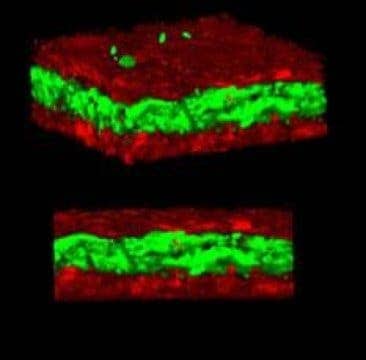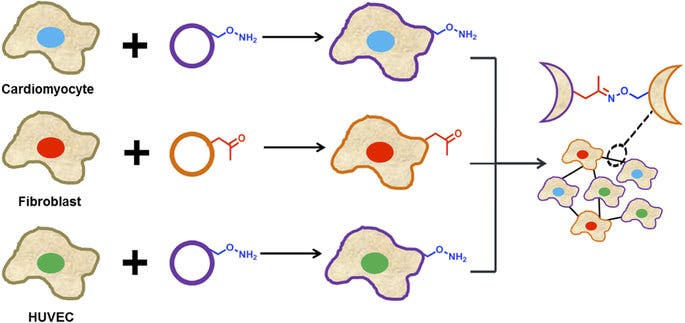Researchers at York University have made a huge breakthrough in the field of tissue engineering after they coaxed three different types of cardiac cells to beat as one. The cells come together like Velcro and the beat is totally synchronized. It’s believed the findings could remove a number of limitations scientists face when manufacturing organs in the lab.

3-D tissue imaged using 3-D fluorescent imaging. The cells are laid down sequentially so the tissue layers are of alternating cell types, just like the membranes in the human body. Credit: York University
Building a heart from scratch in the lab is challenging, to say the least, but it’s well worth the effort. Of the 4,000 Americans waiting for heart transplants, only 2,500 will receive new hearts in the next year. Then, some of those people lucky enough to receive a transplant might be doomed because their bodies will reject the new heart and launch a massive immune reaction against the foreign cells.
A heart made in the lab, however, starts with the patient’s own cells so the resulting tissue looks, feels, and behaves as if it had always been there, inside the patient. Organs, however, have a particular architecture. To convince cells to grow into a liver or heart, for instance, scientists would typically build scaffolding on which the cells can replicate. This scaffold can work well but also comes with limitations.
Up until now, 2D and 3D in vitro tissue could not be made to beat in harmony, which is a must for a heart. Professor Muhammad Yousaf and colleagues tried a different approach and grew heart tissue without the need for a scaffold. The tissue is made out of the three cell types found in the heart: contractile cardiac muscle cells, connective tissue cells, and vascular cells.
“This breakthrough will allow better and earlier drug testing, and potentially eliminate harmful or toxic medications sooner,” said Yousaf, lead researcher of the paper published in Scientific Reports.
The cells were stuck together with a substance called ViaGlue. While the 3D tissue is by no means close to transplantable heart, it provides a great medium for testing drugs for heart disease. Cardiovascular diseases are responsible for 40 percent of all deaths in North America.
Making in vitro 3D cardiac tissue has long presented a challenge to scientists because of the high density of cells and muscularity of the heart,” said Dmitry Rogozhnikov, a chemistry PhD student at York. “For 2D or 3D cardiac tissue to be functional it needs the same high cellular density and the cells must be in contact to facilitate synchronized beating.”










